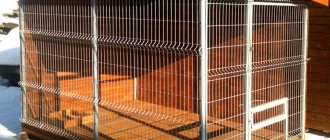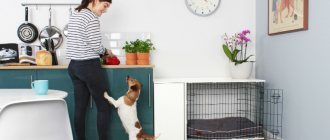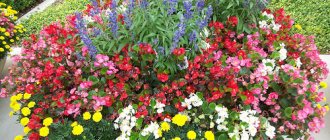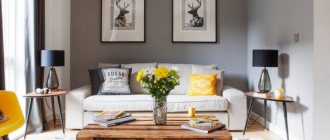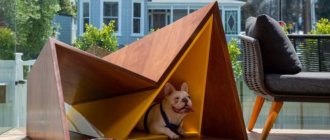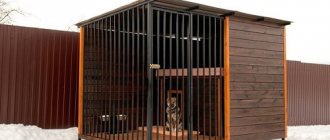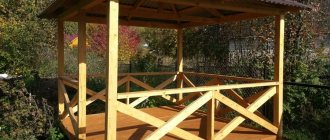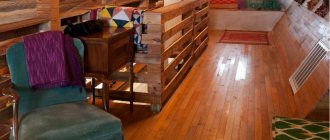SHARE ON SOCIAL NETWORKS
FacebookTwitterOkGoogle+PinterestVk
From this article you can learn how to make a dog enclosure with your own hands: photos of street and home structures made independently, unusual solutions and useful tips from experts. The text describes in detail the technology of construction of structures intended for keeping animals, with visual materials and a detailed description of the entire process: the choice of drawing, materials and dimensions of the structure, followed by manufacturing instructions.
An aviary will allow the dog not only to have its own place, but will also protect the animals from bad weather and external dangers
Planning the Aviary
Unlike small-sized enclosures for apartments, which many people purchase ready-made, street fencing in most cases has to be built independently.
Before you start building an enclosure for a dog, you should prepare its design. It is important to correctly calculate the size of the structure, plan the internal arrangement of the enclosure and determine its location.
When is a special room needed?
An aviary will be required in the following cases:
- a baby appeared in the family;
- the old booth has become too small for the pet;
- the dog “has” its own offspring;
- On a suburban property, the owners have some livestock that needs to be protected from the dog.
A special building for the guard of a suburban area will solve all of the above problems.
Dimensions
The size of the enclosure depends on the size of the dog: the larger the animal, the more space it needs.
The total area is determined by the height of the dog at the withers:
- 45–50 cm – at least 6 square meters. m;
- 50–60 cm – at least 8 sq. m;
- more than 60 cm – 10 sq. m or more.
The correct calculation of the height of the enclosure, that is, the distance from the floor to the ceiling, is also important. In this case, the height of the dog at the withers is not particularly important.
A person will have to enter the fence at a minimum to clean and feed the animal. Therefore, its height is calculated based on one’s own height.
Advice! When purchasing a puppy, it is recommended to clarify the parameters of the dog in adulthood, because based on these data you will have to calculate the size of the enclosure for your pet.
The height of the structure is made to be human height
Making a booth
The Boston Terrier and French Bulldog will be in comfort when the enclosure is supplemented with a good-quality booth. The first rule is the parameters, they are significant and are chosen according to the physique of the LEONBERGER or Rottweiler. The Caucasian Shepherd will not go inside until it becomes comfortable and spacious for sleeping, resting, staying until sunset, the heat subsides, and coolness sets in.
Based on this, they draw a sketch, detail the drawings, and calculate the materials:
- The pet is measured at the withers with the tips of the paws.
- The second parameter, from the nose to the tailbone, will give the size in the lying position.
- Tolerances are made + 15 cm.
3 sizes will create an ideal neat outline: Siberian Husky and Samoyed.
Aviary location
Before building an outdoor enclosure, you need to choose a suitable place for it. The main thing here is not the combination of the structure with the overall design of the site, but ensuring comfortable keeping of the dog.
It is not recommended to build a fence:
- in the lowest place of the plot. Regular accumulation of melt and rainwater may not have the best effect on the health of your four-legged friend;
- next to an outdoor toilet, a sewage pit and not far from barns with livestock and poultry. Unpleasant odors that the dog will have to constantly smell can cause problems with smell;
- in close proximity to the external fence of the personal plot, facing a busy street. The noise of cars can cause hearing impairment, as well as the psychological state of the dog.
In addition, the enclosure must be installed so that the entrance to the house and yard is constantly in the dog’s field of vision.
It is important to choose the right location for the enclosure
Note!
- How to make a hot smoked smokehouse - 75 photos of the best ideas and step-by-step instructions
Molds for paving slabs - easy instructions on how to make them yourself (80 photo ideas)
Feeder for chickens - ideas, description of construction and features of creating feeders from scrap materials
Where to place it correctly
The correct place is considered to be the one that is typical of the recommendations:
- Preference is a flat, dry area, no drafts or gusts of wind.
- The animal has a maximum view of 120° in both directions.
- The location is not close to the entrance and fence.
- Complete isolation from the owner is eliminated and loneliness is not experienced.
- Away from the windows of the house. So that the smells do not reach the hut.
Base
In progress:
- mark the area: measure the width and length of the enclosure, hammer pegs in the corners and stretch the fishing line or rope;
- remove the top part of the soil over the entire area of the future fence to a depth of approximately 20 cm and make a concrete screed at the rate of 4 parts sand to 1 part M400 cement. A slight slope to one side will later help to easily wash off dirt from the floor of the enclosure;
- The part of the fence that is left for walking the dog is left open, and the rest is covered with a wooden platform on joists.
The height between the platform boards and the concrete screed must be at least 10 cm. The boards are fitted tightly to each other to eliminate the presence of cracks.
Some dog owners leave a ground covering in the enclosure. This is not the best solution. Most four-legged pets love to dig, so there is always the possibility that the dog will dig a hole under the wall and get out of the fence.
It is better to make the floors wooden
Construction of the foundation
The first and most critical stage of the work is to prepare the foundation.
For the convenience of the owner, you can choose a solid concrete screed, strip foundation (without recess) and stone flooring.
Instructions on how to make the base of an enclosure for a dog with your own hands:
- All construction debris and large stones should be removed from the prepared site.
- The next step is to remove the surface layer of soil.
- The bottom and walls of the resulting pit are leveled.
- Sand and gravel are poured into the entire depth of the prepared pit (approximately 0.2-0.3 meters) in a 1:1 ratio.
- Brick or tile borders are installed along the periphery of the limited area.
The next task of the master is to pave the area with stone or brick. The seams between adjacent elements are covered with a mixture of dry cement and sand. As an alternative, you can make a solid concrete screed.
Frame and fencing
The choice of material for a dog enclosure depends on the physiological characteristics of the animal, in particular, its strength and size.
If for representatives of small breeds you can build an enclosure from wooden beams and metal mesh, then for larger ones, as can be seen in the photo of the dog enclosure, it is better to use round or profile metal pipes and durable fittings.
In progress:
- measure and cut 4 pipes (wooden beams), which will serve as corner supports. The length of the first pair of supports should correspond to the height of the enclosure, and the others are made 15–20 cm longer (the longer the 2nd pair of supports, the greater the slope of the roof);
- install supports in the corners of the future enclosure. If the length of the side of the structure is more than 3 m, install intermediate posts of smaller diameter than the corner posts. Additional support is also installed at the location of the gate;
- the supports are connected to each other by metal corners or wooden boards, welding (screwing) them along the perimeter in the upper, middle and lower parts of the frame;
- blank walls (2 or 3) are sewn up on the inside with boards or ready-made slabs made of pressed wood chips;
- for fencing, a metal mesh is stretched or metal rods are welded, maintaining certain intervals between them.
A small parapet along the entire length of the open walls will help protect the enclosure from snow drifts.
The frame can be metal or wood
Requirements for materials for construction
The enclosure should be equipped from proven materials. Wood and metal are suitable for these purposes. You should not place additional decorations on the grill, which could damage your pet’s paws. Fasteners should be kept to a minimum. First of all, it is recommended to take care of the base. It is selected depending on the service life of the structure. For seasonal buildings at the dacha, it is enough to fill a cushion of expanded clay or sand. For a stationary object intended to be used for several years, a strip or column foundation is suitable.
The floor inside the enclosure can be sandy or earthen, no different from the surrounding soil. Open ground is more acceptable for a dog to cope with its natural needs. Wooden covering is also used. If insulation is placed under the boards, the structure can be used in winter. When planning a building for the permanent residence of an animal, you can combine an open area with wooden flooring.
If there is a concrete base, the walls can be built from brick, cellular concrete, or use a metal frame covered with wood, usually coniferous. The enclosure must have at least one open side, fenced with a welded, forged lattice. The gate is made of a metal frame and iron rods.
It is better to use slate and metal tiles for roofing; they retain heat well. Some people use corrugated sheeting, but it is not suitable for roofing; during hot periods it overheats, and in winter it emits cold. When choosing any material, a visor should be provided.
The booth is erected in two ways: as a separate object, as a compartment of a common object, fenced off from the walking area by a partition. The optimal building material for constructing the box will be natural wood. Timber is used for the frame, and the walls and roof can be made from various wooden slabs.
Door
Considering that the owner or one of the household members will have to regularly enter the enclosure, the size of the doorway is calculated based on the dimensions of an adult.
The height of the door in most cases corresponds to the height of the fence. Width – 3–4 cm less than the distance between the supports of the doorway. This will ensure normal door movement and eliminate the possibility of jamming.
During the door leaf manufacturing process:
- make a frame from metal corners or wooden boards;
- fill the space inside the frame by analogy with a general fence: stretch the mesh or weld metal rods.
The door is hung on hinges previously fixed to one of the supports of the doorway.
Attention: The enclosure door must open inward and fit snugly against the fence wall. The door is equipped with a strong lock on the outside.
The door is equipped with a strong lock on the outside
Professional opinion
Dog handlers believe that keeping a dog in a special place does not at all limit the freedom of a pet, but, on the contrary, disciplines it. By “evicting” a family pet from a living space, you will not harm him, but will achieve several goals at once:
- create comfortable living conditions for the dog;
- Make it easier for yourself to clean, feed and care for your animal;
- ensure a safe stay on the site for guests, small children, and domestic animals;
- You can constantly watch your four-legged friend.
Roof
In most cases, the roof of the structure is made pitched with an overhang of at least 20 cm. A metal profile, corners or wooden beams are used to make the frame. Slate, metal tiles or polycarbonate sheets are suitable for the roof.
The simplest roof option is a pitched roof
Arrangement
If you decide to build a structure yourself, listen to the advice of professional breeders:
- in order to save money and space, do not reduce the established size standards;
- do not make the enclosure too large - in winter it is difficult to maintain the required temperature;
- carefully consider and follow the rules for making the walls, roof and floor of the enclosure.
Let us consider in more detail how to correctly manufacture individual structural elements.
Kennel
You don't have to build a kennel that is too big. Its area should be exactly such that the dog can turn freely, and its height should be approximately one and a half times the height of the dog at the withers.
The doghouse needs to be warm, so they make it wooden. Ideally, make the floor and walls in 2 layers (for example, board and plywood) and insert thermal insulation material between them.
The size of the kennel should match the size of the dog
The dog spends most of its time in the enclosure. Therefore, it is extremely important to make it spacious, comfortable and warm.
Selecting a location
The enclosure creates coziness, comfort, and convenience. To do this, an area on a hill is fenced off so that all cardinal directions are visible. A prerequisite is full visibility of the entrance to a residential building, the entrance gate. This tracking factor for the dog is extremely important; the zones of the tracking points are tracked.
A garden plot with beds and buildings, where the owner spends 80% of his time, is suitable; Irish, English and Scottish setters see it perfectly and watch from time to time. Communication is done with all family members so that the pet does not get bored, whine, or feel anxious.
Other conditions are unbearable for the animal; constant melancholy will cause whining and howling. It is impossible to limit the Shar Pei breed from the world of everyday life, observation, caresses and liberties, usual activities and attention with the owners.
Photos of dog enclosures
Walls
A dog is an inquisitive animal, so it needs to be given the opportunity to observe the surrounding area. One or two sides of the structure must be decorated with mesh or gratings.
Important! “Mesh” walls should not have sharp elements so that the dog does not get hurt. It is better to decorate blank walls with boards or lay them out with bricks.
How to care?
In order for the enclosure to last longer, it should not be ignored. You need to regularly:
- carry out dry and wet cleaning;
- paint;
- If possible, antisepticize wooden parts.
Bare dirt or grass
The simplest solution may be clean dirt or grass. However, such a dog enclosure also has disadvantages.
Advantages:
Grass and dirt can become light flooring.
- Doesn't require much preparation.
- Dirt and grass are easily tolerated by the dog's paws.
However, there are also disadvantages.
Flaws:
- The grass turns to dirt.
- It's not so easy on the eyes
After a while, dogs can easily trample the grass until all that remains is dirt. Therefore, most dog kennel owners prefer a cleaner surface to prevent their dogs from digging in the dirt.
If choosing a dog treadmill for mud and grass, you can add a hose near the entrance to rinse off the dogs before letting them into the house.
Portable design
For small dogs, enclosures are made that can be brought into the apartment. The rules for working on such structures are the same as the design of street premises.
In principle, such products are more likely to be needed for growing puppies - they prevent little doggies from wandering around the house.
Concrete floor
If you are planning a concrete floor in a permanent enclosure, then you must keep in mind that it is necessary to put a covering on the concrete, otherwise your pet will be very uncomfortable in winter.
The wooden floor is installed as follows:
We recommend reading:
- A hedge on a property: TOP-best ideas on what to use to make a beautiful hedge on a plot. Photo, diagram, instructions, tips from the gardener
Do-it-yourself rock garden: step-by-step instructions on how to create a beautiful rock garden (145 photos and videos)
DIY stone flowerbed - 140 photos of stylish and beautiful ideas on how to build a stone flowerbed
- a frame is made from boards or timber around the entire perimeter of the foundation;
- logs are attached to the harness;
- if it is planned to insulate the enclosure, then a subfloor is made;
- Insulation is laid between the joists in accordance with the instructions;
- the finishing floor is attached (if the enclosure is not intended for winter maintenance, then the previous two steps can be skipped).
Special cases
Husky
This intelligent, loyal and disciplined dog is becoming increasingly popular. If reindeer-hunting huskies do not make watchmen, and hunting dogs are produced occasionally (although all of them are outstanding), then the husky can be called a jack-of-all-trades dog. However, a husky enclosure should have a number of features.
First, the enclosure for a husky needs a height of 2.2 m. The husky dog is a very jumping dog; in their homeland they need it so much to look around over the endless snow. A husky jumps almost like a poodle, and he, for your information, jumps from the floor onto the cabinet without a run.
Secondly, the bars of the husky enclosure should be made not from rods, but from mesh. Jumping, the husky clings to it. If the bars of the husky's enclosure are made of twigs, then it will be impossible for the dog to do the physical exercises it needs. Finally, in mid-latitudes and to the south, it is better to have a husky enclosure facing north, northeast and northwest.
About the grid
Dog enclosures with mesh bars
A mesh lattice instead of rods is also suitable in an enclosure for dogs of other breeds. It is better to place a wicker mesh grille in the enclosure, pos. 1 in Fig. on right. For a husky, this is all the more good because the wires of the woven mesh are bent in a zigzag and are easier to cling to. But welded mesh will also work, pos. 2. In both cases, the wire diameter is from 4 mm, and the mesh is 10x10 cm for large dogs and from 5x5 to 7x7 for small ones.
It is not advisable to use chain-link mesh to lattice enclosures: even very calm dogs often injure their paws on it, and hair plucked by chain-link is a common occurrence in such enclosures. By the way, chain-link is safe for a husky, this dog is so smart. She is too smart for a chain-link enclosure: she unravels the joints, tears them off the frames and leaves the enclosure in an hour and a half. The only time an enclosure for a dog made of chain-link mesh is justified is when its area is more than 20 square meters. m, and the dog is a guard breed, i.e. very disciplined, and trained by a good dog handler.
For small and small
A puppy and a small but adult dog are far from the same thing, and they need different enclosures. First, there is no need to make an enclosure for puppies out of wood (item 1 in the figure below): they are still weak, but they will chew. The wood chips will be swallowed and get stuck in the ragged hole. Secondly, an enclosure for puppies needs to be made, taking into account that they have an insatiable curiosity, but their little minds have not yet developed. Scientifically, the full range of dog instincts has not yet been activated.
Enclosures for puppies and small dogs
Instead of an enclosure, suckling and stupid puppies should be kept in a playpen with soft walls so that there is no whining; a baby puppy feels abandoned if he cannot get used to something warm and soft. This is why puppies are often friends with house cats. A playpen for a puppy can be made from a cardboard box; For a couple more options, see the video at the end of the section.
When the puppy in the playpen begins to stand up, leaning his front paws on the side (pos. 2 in the figure), the soft upholstery needs to be removed and the puppy must be accustomed to the apartment cage made of mesh, pos. 3; It’s better to simply bend it from a piece of mesh with a mesh size of 3x3 to 5x5 cm, soldering the joint. A knitted joint is dangerous for a puppy.
Enclosures in an apartment for small dogs are generally arranged in the same way as for large ones, taking into account the low strength and insignificant love of freedom of the inhabitants. An enclosure for a decorative dog is the same set of beds made of vertical rods. Ready-made sections of mini-kennels for dogs are sold in pet stores; from them a dwelling of the desired size and configuration is assembled. But remember: for an indoor dog, an enclosure is something like a public garden with a bench or a bar. For permanent housing, a dog needs a house in an apartment.
Note: for lap dogs and other long-haired dogs, only welded sections of the apartment enclosure should be used. Braided dogs will pull out all the fur, especially since decorative breeds of dogs, as a rule, are no different in intelligence.
Video: puppy pen
Video: do-it-yourself playpen for puppies
For the pack
Aviary for several dogs
If the area is guarded by several dogs, a common enclosure for them should be made of sections with half-winter roads, canopies 3/4 of the length of the section, blank partitions between them and separate feeding troughs. Otherwise, bickering in your free time from work is guaranteed. In this case, 3-4 square meters will be enough for a large dog. m of area and sections as wide as the length of her body without a tail, see fig. on right.
